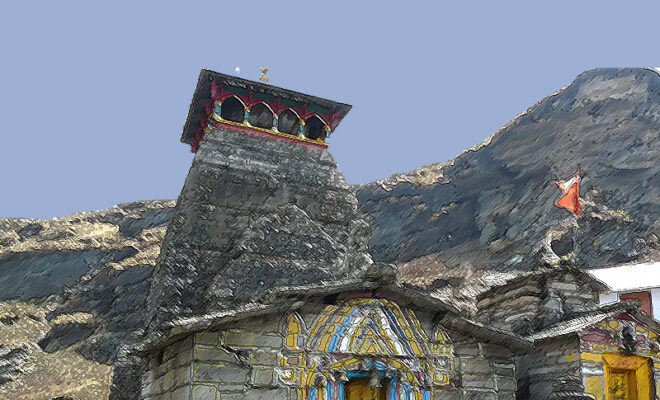Tungnath Temple: World’s Highest Lord Shiva Temple Tilts 6-10 Degrees

The ASI has reported a major architectural concern of the world’s highest Lord Shiva temple as it has tilted 6 to 10 degrees. Its height is around 13k feet.
The Tungnath Temple, located in the Rudraprayag district of the Garhwal Himalayas at an altitude of 12,800 feet, is the highest Lord Shiva Temple in the world.
The recent finding by the Archaeological Survey of India (ASI) that the temple is tilting by approximately 6 degrees, with smaller structures tilting by 10 degrees, has raised concerns about its stability and preservation.
The Tungnath Temple holds immense religious and cultural significance. It is dedicated to Lord Shiva, one of the principal deities in Hinduism, and is part of the Panch Kedar pilgrimage circuit in Uttarakhand, India.
The temple attracts a large number of devotees and tourists who visit to seek blessings, engage in spiritual practices, and witness the breathtaking beauty of the surrounding Himalayan landscape.
The tilting of the temple and its structures has prompted the ASI to conduct a detailed study to determine the root cause of the damage.
The authorities aim to identify immediate repair requirements and develop a comprehensive plan for the restoration of the shrine.
The central government has been informed about the situation, and steps are being taken to declare the temple a protected monument of national importance.
Preserving the Tungnath Temple is crucial not only from a religious and cultural perspective but also from an architectural and historical standpoint.
The temple represents a significant example of ancient Indian temple architecture and craftsmanship.
Its intricate carvings, elaborate stone structures, and unique architectural elements reflect the rich heritage and artistic traditions of the region.
The temple’s significance extends beyond its physical structure. It serves as a symbol of faith, spirituality, and devotion for millions of devotees who consider it a sacred site.
Its preservation ensures the continuity of religious practices and cultural traditions associated with Lord Shiva worship.
The temple also plays a vital role in promoting tourism, contributing to the local economy, and fostering a sense of pride and identity among the local community.
ALso Read:- Sawan 2023: 10 Best Shiva Temples For Sawan Month Worship
It is crucial to address the tilting issue of the Tungnath Temple and undertake appropriate restoration measures.
The involvement of experts, consultations with stakeholders such as the Badri Kedar Temple Committee (BKTC), and the careful consideration of all factors will be essential in ensuring the temple’s structural stability while preserving its historical and cultural significance.



